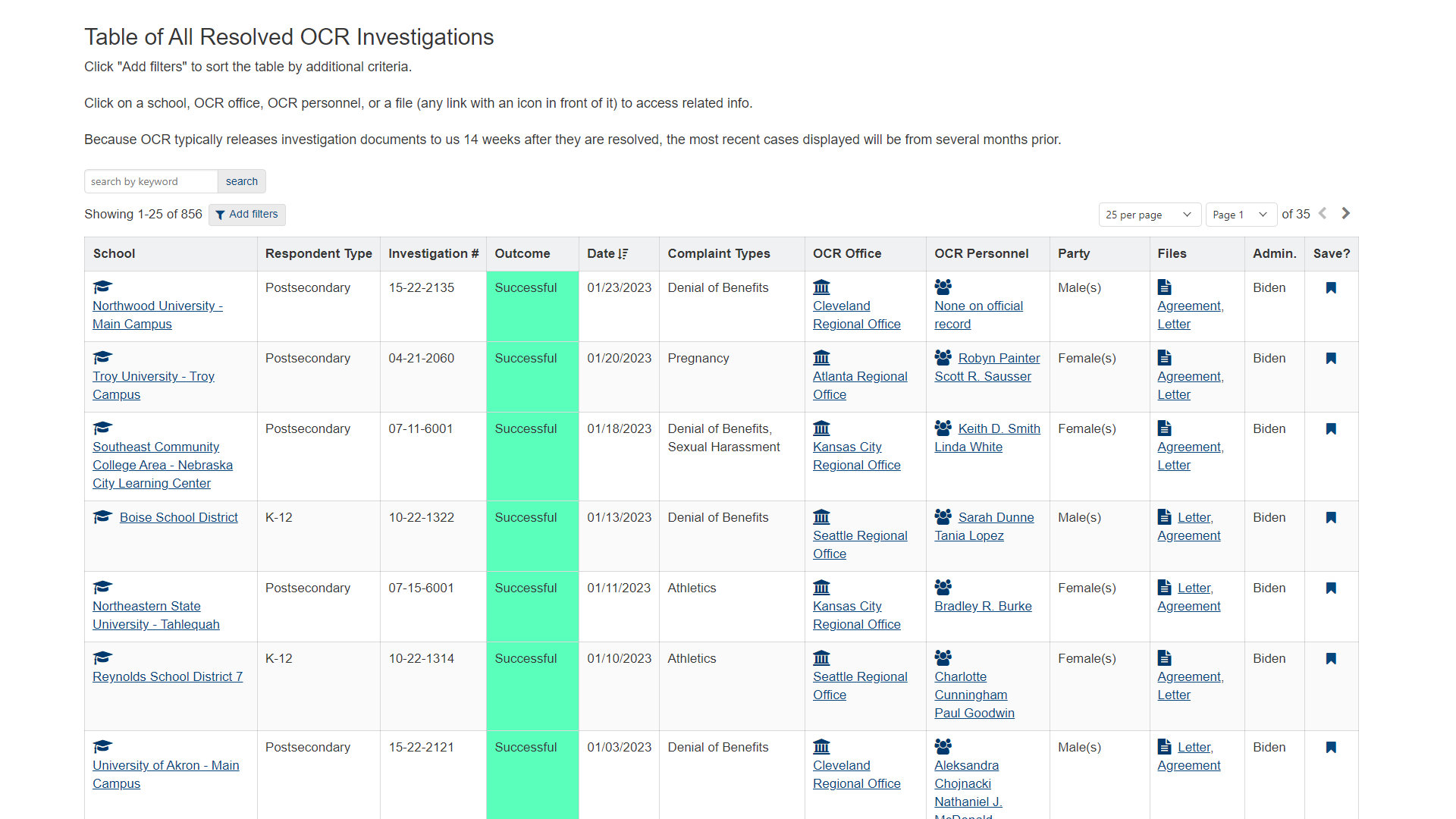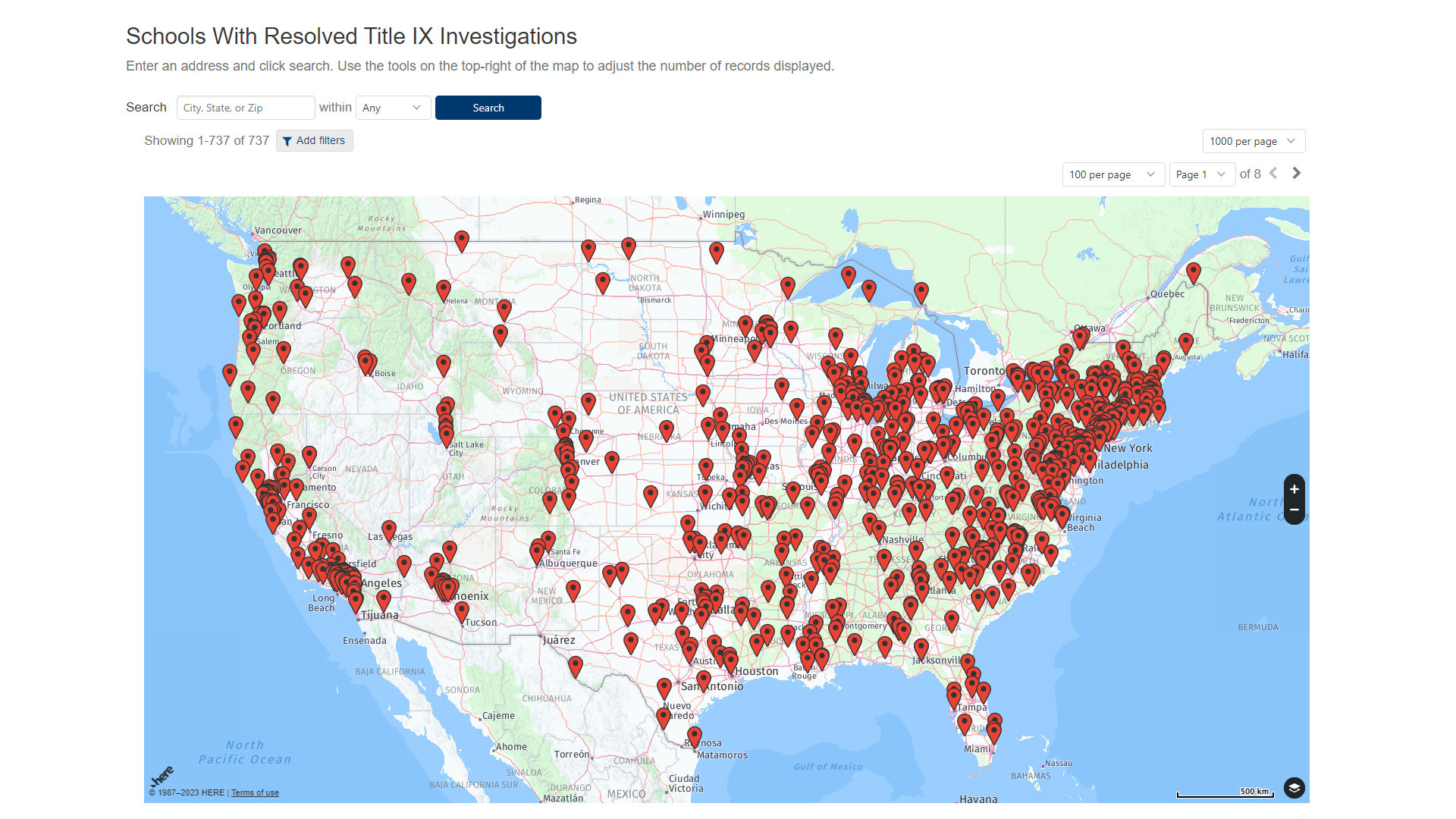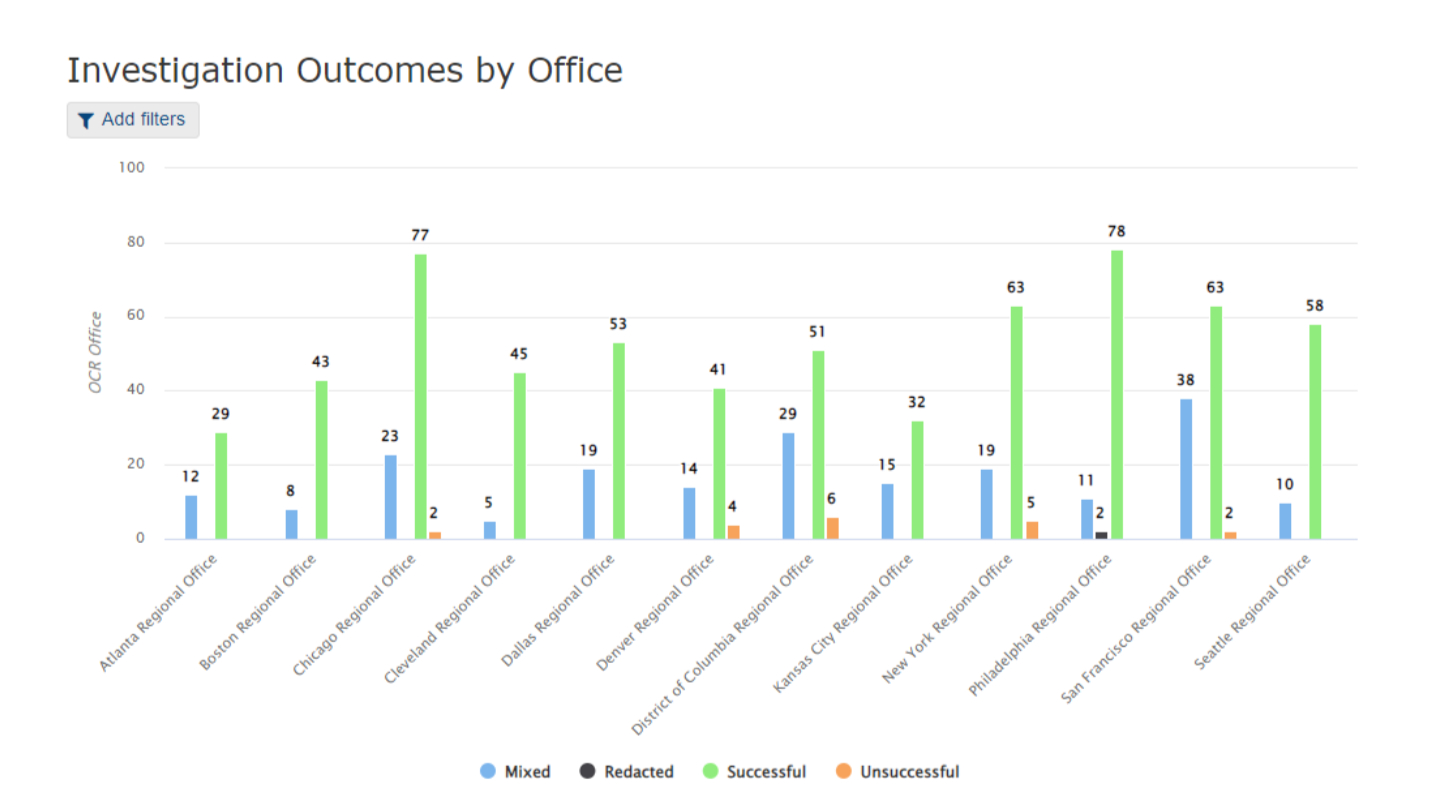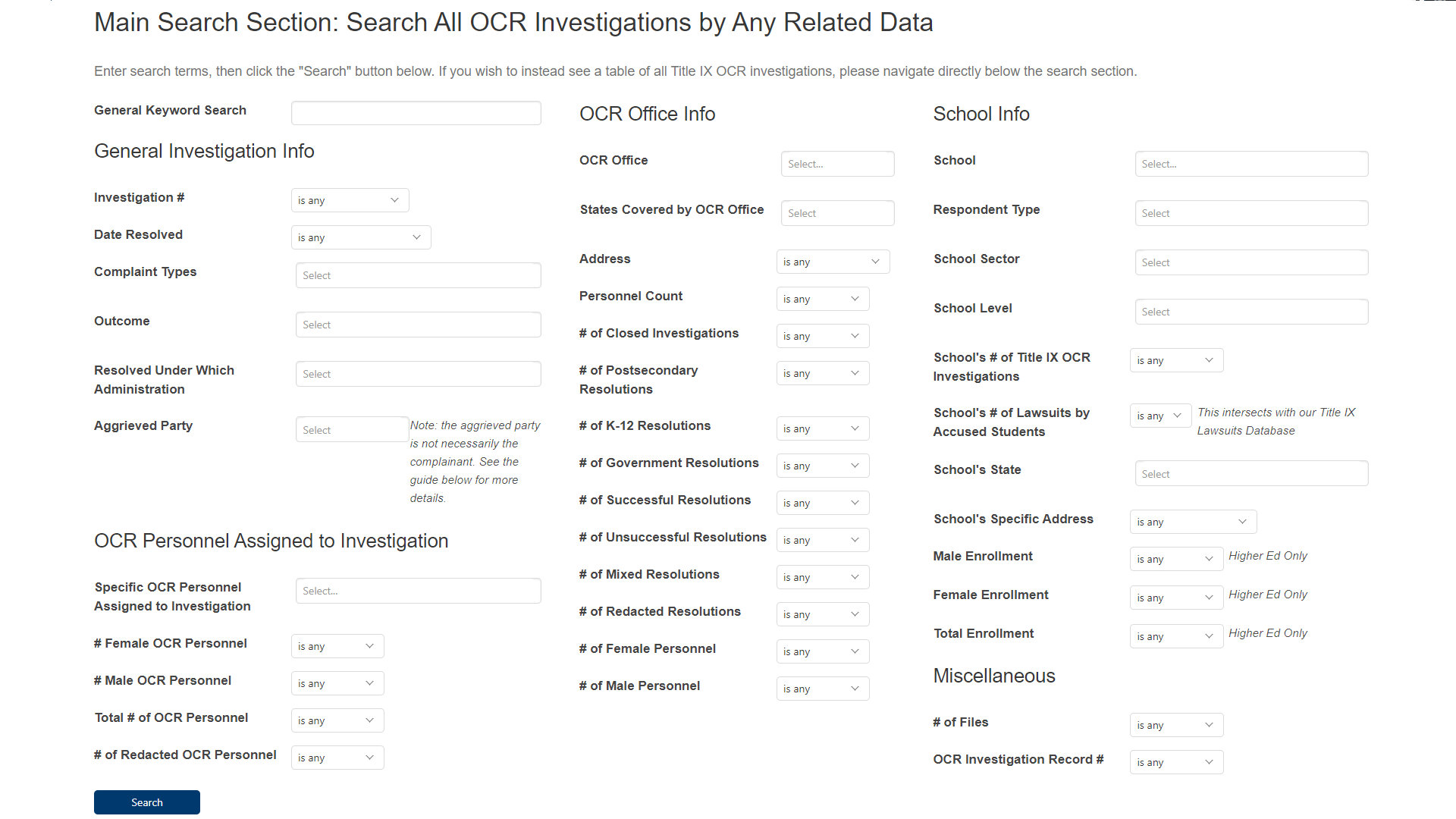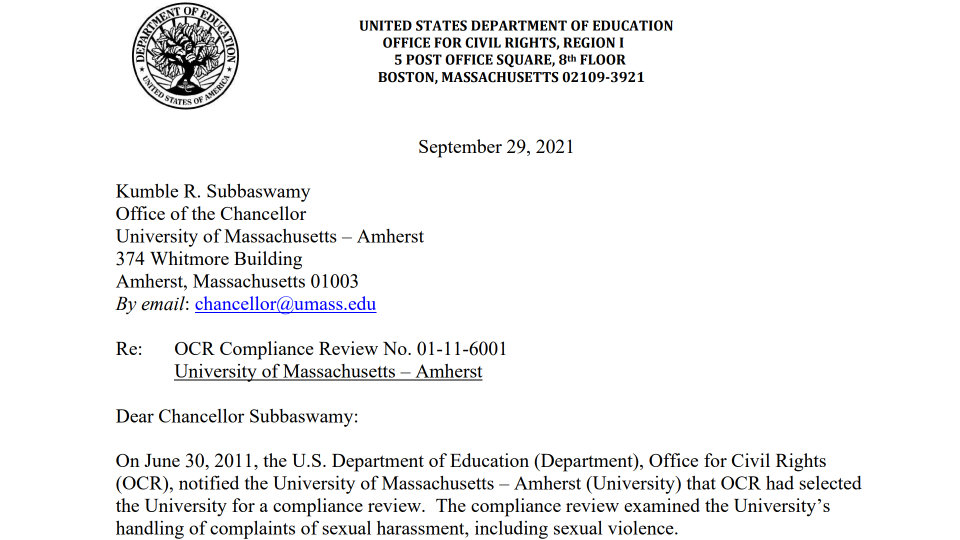Welcome to the OCR Resolutions Database
This database contains resolved Title IX investigations of K-12 and postsecondary institutions by the Department of Education’s Office for Civil Rights (OCR). We have constructed this resource to assist students, families, professionals, and advocates.
Welcome to the OCR Resolutions Database
This database contains resolved Title IX investigations of K-12 and postsecondary institutions by the Department of Education’s Office for Civil Rights (OCR). We have constructed this resource to assist students, families, professionals, and advocates.


Already signed up? Let’s get you logged in.
You can also reset your password here, if necessary.
Already signed up? Let’s get you logged in.
You can also reset your password here, if necessary.
You can learn more about the database here.
You can learn more about the database here.
Here is a recent tally of select data:
General Info
Reimagined, rebuilt, radically expanded, and relaunched in July 2021, this database systematically tracks hundreds of resolved Title IX investigations in K-12 and postsecondary institutions that were resolved from mid-2010 to the present through the Department of Education’s enforcement office: The Office for Civil Rights. The OCR Resolutions Database provides a suite of interactive tools – visual reports, files, tables, maps, search engines, and more – to assist Title IX professionals, advocates, reporters, students who are victims of gender bias and their families, and researchers.
Uses for This Database
- Learn what makes complaints successful, what causes schools to run afoul of Title IX compliance, and what OCR requires for schools to come into compliance. Common complaints include sexual harassment, unfair discipline, sexual violence, discrimination in academic programs, unequal athletics opportunities, discrimination in admissions, and retaliation. Often, Title IX investigations also spark investigations into other areas (and vice versa), such as disability, race, and age discrimination.
- Compare and monitor key similarities and differences in OCR’s Title IX enforcement between presidential administrations using extensive datasets and unique interactive reports.
- Discover which schools have a poor history of compliance and the nature of the complaints made regarding them.
- Identify which demographics of students need more support, what support they need, and where.
- “Watch the watchers”: compare and monitor the general effectiveness of OCR’s regional offices by evaluating the experience, diversity, and resolution outcomes of OCR personnel on both a broad and granular level.
- Much more! View the interactive previews below to learn more or sign up.
Summary of Features
Click the images to expand them and get a better sense of the features.
General Info
Reimagined, rebuilt, radically expanded, and relaunched in July 2021, this database systematically tracks hundreds of Title IX investigations in K-12 and postsecondary institutions that were resolved from mid-2010 to the present through the Department of Education’s enforcement office: The Office for Civil Rights. The OCR Investigations Database provides a suite of interactive tools – visual reports, files, tables, maps, search engines, and more – to assist Title IX professionals, advocates, reporters, students who are victims of gender bias and their families, and researchers.
Uses for This Database
- Learn what makes complaints successful, what causes schools to run afoul of Title IX compliance, and what OCR requires for schools to come into compliance. Common complaints include sexual harassment, unfair discipline, sexual violence, discrimination in academic programs, unequal athletics opportunities, discrimination in admissions, and retaliation. Often, Title IX investigations also spark investigations into other areas (and vice versa), such as disability, race, and age discrimination.
- Compare and monitor key similarities and differences in OCR’s Title IX enforcement between presidential administrations using extensive datasets and unique interactive reports.
- Discover which schools have a poor history of compliance and the nature of the complaints made regarding them.
- Identify which demographics of students need more support, what support they need, and where.
- “Watch the watchers”: compare and monitor the general effectiveness of OCR’s regional offices by evaluating the experience, diversity, and investigation outcomes of OCR personnel on both a broad and granular level.
- Much more! View the interactive previews below to learn more or sign up.
Summary of Features
Click the images to expand them and get a better sense of the features.
Use additional resources to assist in filing a complaint

And more.
Ready to Sign Up? Select a Plan Below
To access the database you must subscribe to it. Select the plan of your choice below. Our model offers deeper discounts for longer subscriptions as well as affordable short-term options.
*Special introductory pricing for first-time subscribers. Subscriptions renew at full price. Cancel anytime.


